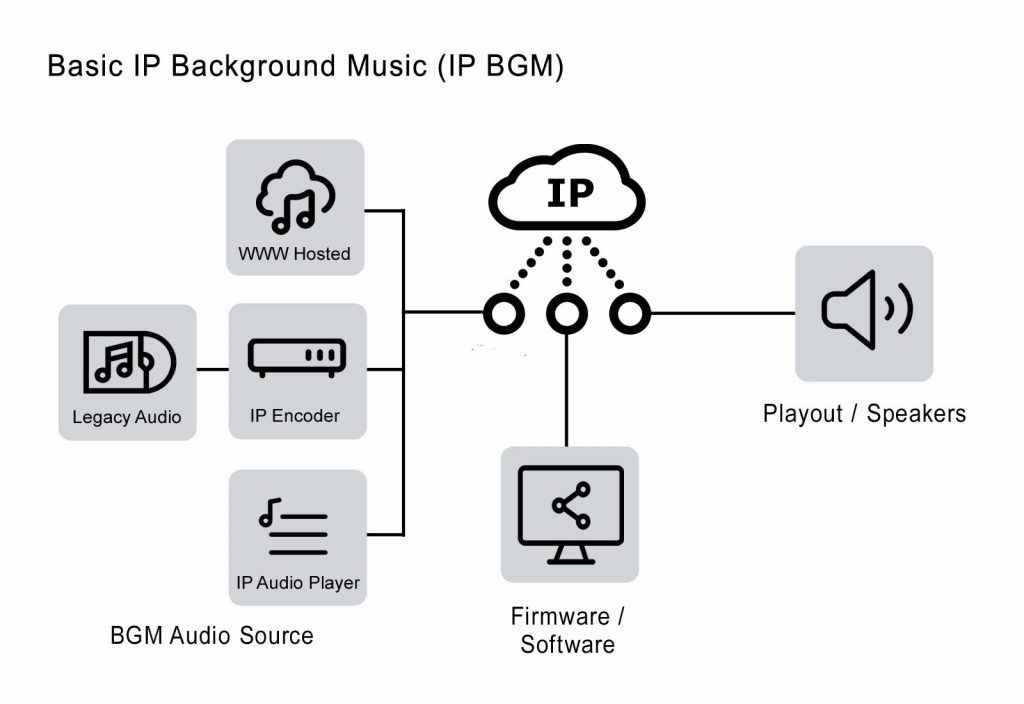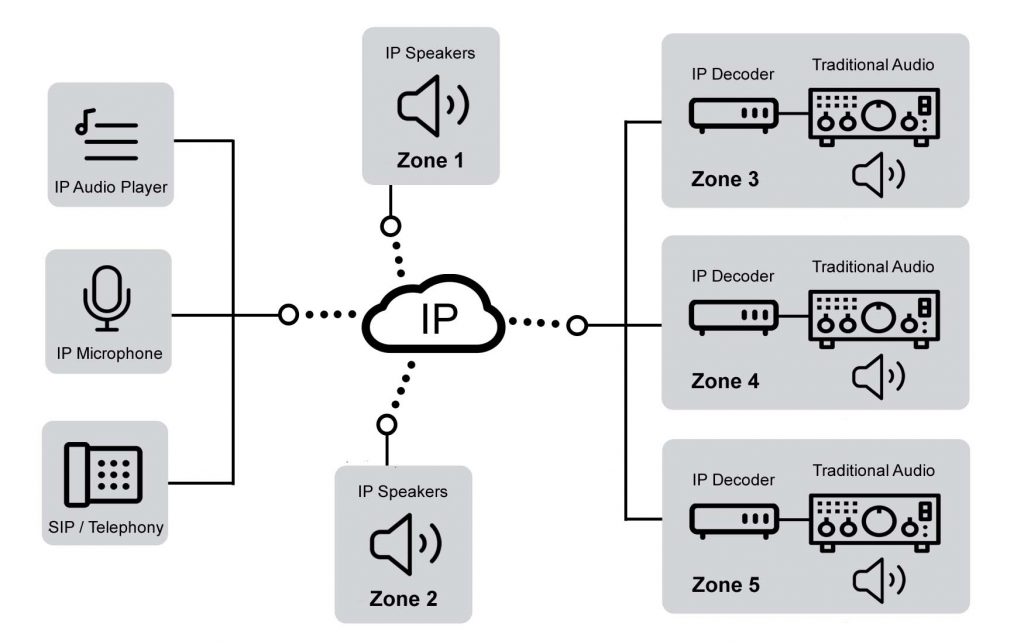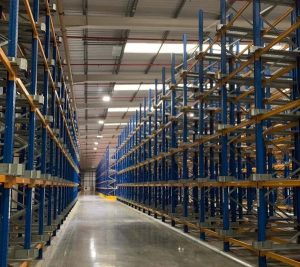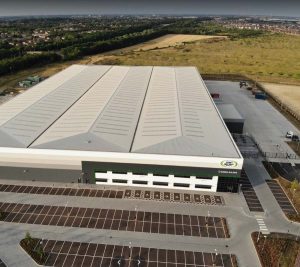
IP Background Music (IP BGM)
Home / IP Audio Applications / IP Background Music (BGM)
"TURN UP THE MUSIC!"
- Create mood & ambiance
- Locally managed & hosted music content options
- Managed playlists & curated music
- Factories, restaurants, retail, sporting venues… BGM for all
IP Background Music (IP BGM)
Background music (BGM) is widely used across most industry and business sectors. Radio feed into factory production or specialist curated music into retail, background music helps to lift mood and create atmosphere.
Why Background Music?
Background music, even when you are barely aware of it, can be surprisingly influential and powerful. For example, studies and research has found that music can affect the concept of time – how quickly time may have passed in the work place or perhaps ‘waiting’ in a queue. BGM has also been shown to improve retail shopping experiences, customer spending & shopper interaction with sales staff…. and even how sweet or bitter food tastes.
Traditional Background Music (BGM)
Traditional commercial audio and background music is largely premises based, with a dedicated sound system installation including the required primary audio entities.
Traditional BGM Audio Entities
- Music Input Source (MP3 / CD player, radio tuner)
- System Equipment (mixing, amplification)
- Loud Speakers
- Cabling Infrastructure
How does a traditional BGM system work?
Traditional BGM audio systems are designed to include the typical audio entities as detailed. Audio is generated by a music source input entity such as an MP3 / CD player or radio tuner. Audio mixer/matrix and amplification equipment is used to ‘process’ audio ready for output. Output entities (tannoy/pa and music loud speakers) are used for audio playout.
IP Background Music (IP BGM)
IP background music and IP network communications infrastructures enable improved function, capability and flexibility when compared to traditional BGM.
IP BGM Audio Entities
- Music Audio Source:
- Local IP music content player
- Hosted and web streaming music services
- Specialist curated music services
- System Equipment (Firmware / Software)
- IP Loud Speakers
- IP Network infrastructure
How does IP Background Music work?
A fully IP based IP BGM system solution will typically employ a range of IP audio entities.
Audio Source Entities: Options include:
- A local IP music content player (holds tracks, playlists and creates playout schedules)
- A hosted music streaming service (eg. Soundtrack Your Brand)
- A ‘curated’ streaming service (targeted sector & business BGM – popular choice)
- Interface to traditional / legacy audio player device (MP3/CD/Radio Tuner)
System Entities: Many IP BGM systems are designed to run from firmware loaded onto the IP devices / IP speakers – additional server or system equipment is not generally required. More complex IP BGM and audio solutions including multiple audio applications (eg. IP tannoy, paging, PA & message playout) may require a dedicated server / management platform. These often enable centralised control, management and monitoring for multi-customer / multi-site IP BGM designs.
Playout / IP Speaker Entities: IP speakers (typically PoE powered) provide playout from audio and BGM music streams. Unlike traditional speakers, IP speakers can be configured to enable playout from selective & multiple BGM source entities. For example, IP speaker/s in one room or area can be configured to playout different BGM and audio to other rooms or areas. IP speaker entities enable BGM playout in this way, including time of day music & playlist scheduling.
Mixed Technology BGM
Mixed IP BGM & traditional BGM audio technologies can provide a cost effective proposition for both existing audio system installations and new audio installations.
For example, utilising IP audio network infrastructure for distribution, IP audio decoder/s devices are used to connect to traditional audio system equipment and speakers. This enabling capability is particularly effective where concentrations of speakers are required in one area. Extending this to a wider topology serving a large site or campus type setting has become a poplar option for large scale commercial audio installations.
Business Music Licencing
It is important for businesses and commercial organisations to understand their responsibilities and obligations to music broadcast & performance against copyright and the Designs and Patents Act 1988. The act covers a range of topics, detailing how permission is needed from the copyright holders when implementing music playout or performance (including background music within most commercial premises).
In short, to comply with the Designs and Patents Act 1988, to playout or perform music, most commercial businesses will require permission, in the form of a licence, from those that create, record and publish music (the act does not cover homes and domestic settings).
You may be infringing copyright if you play live or recorded music without a licence. You could be sued for damages!
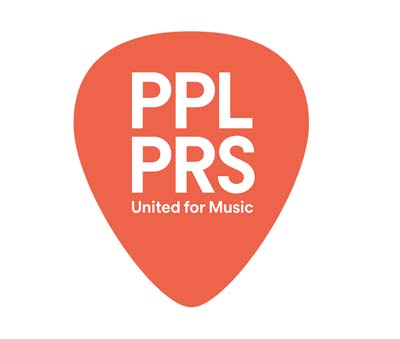
PPL & PRS for Music
The PPL & PRS for Music are separate organisations responsible for licensing different sets of rights in the use of music. Together, they act as music collecting societies. PPL collects and distributes money on behalf of artists, performers and record companies for the use of their recorded music. PRS collects and distributes money on behalf of songwriters, composers and music publishers, for the use of their musical compositions and lyrics.
The PPL:
Licencing for recorded music and playout through TV, Radio, online and other media. PPL’s members range from session musicians and emerging artists to major record labels and globally successful performers – all of whom are entitled to be fairly paid for the use of their recorded music.
The PRS:
Licencing for songwriters, composers and music publishers. Royalties are paid to their members when their work is performed, broadcast, streamed, downloaded, reproduced, played in public or used in film and TV.
The Music Licence
Previously, businesses and commercial organisations required licening from both the PPL and PRS to play or perform music. Separate licencing from the two organisations sometimes could sometimes cause confusion as to what the licencing was for as well as having burden of cost and contract licencing responsibilities – for what was often misunderstood as being the same thing.
In 2018, reconising this position, to help improve awareness and to simplify licening, the PPL & PRS launched a joint venture called TheMusicLicence. From 2018, businesses and commercial organisations now have a single contact, single invoice and single licence.
Royalty Free Music
‘Can I use royalty free music and avoid paying the licence fee?’
This is a common question that unfortunately doesn’t come with a clear or straightforward answer. Royalty free music does exist, however, nearly all royalty free music requires some form of attribution (eg. a statement within a video game or YouTube video) – clearly not possible to provide with background music.
Successful background music relies on careful consideration and choice of music playout (to create the right mood, ambiance for the business setting). It is therefore important to compile selective music tracks and playlists with a decent quantity and in many cases, recognisable content. To ensure 100% compliance, this would be a tough task to achieve with truly copyright free, royalty free, non attributed music and would likely require regular and time consuming management to maintain and update. In this respect, we believe royalty free music to be best suited to using one or a small number of music tracks for use in a product display, demonstration, presentation or trade show.
Client Installation Projects
Background Music (BGM)
Need help? Want more details?
Need to discuss a new background music (BGM) system design or project?
Want to learn more about IP audio applications?


